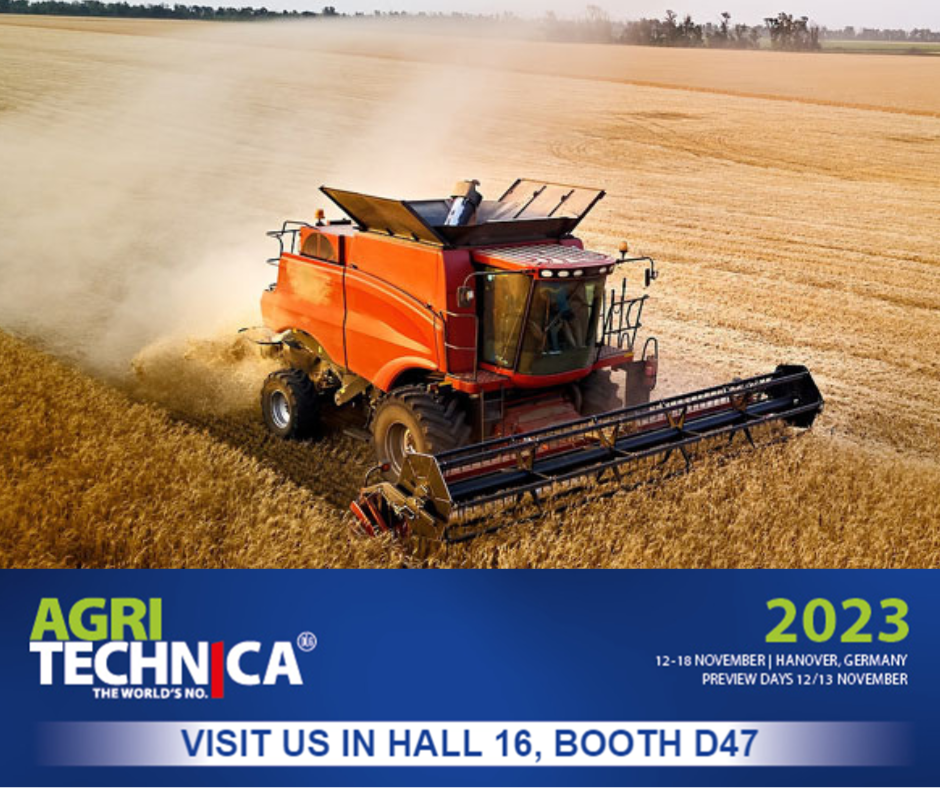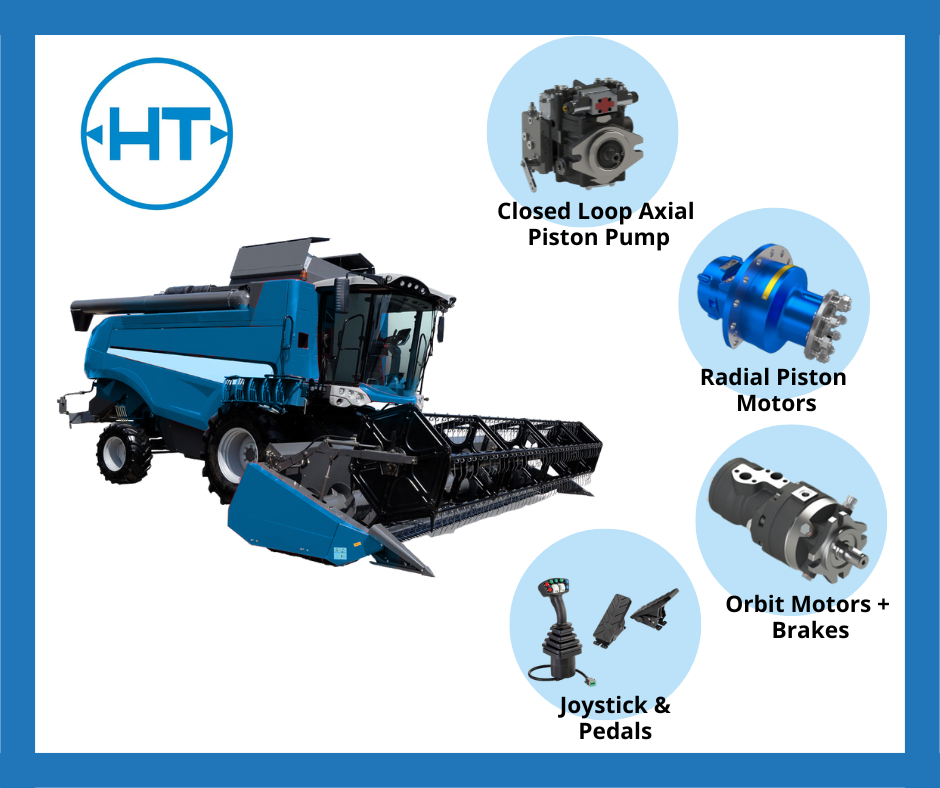A harvester is a complex agricultural machine used for reaping, threshing, and cleaning crops like grains or other crops like sugarcane or cotton. It often involves multiple stages and functions that require precise hydraulic control. Here’s a more detailed breakdown of the hydraulic components and their functions in the hydraulic circuit of a harvester:
Hydraulic Circuit of a Harvester:
- Hydraulic Pump: The hydraulic pump generates the pressure needed to power the various hydraulic functions of the harvester. It draws hydraulic fluid from the reservoir and pressurizes it for distribution.
- Hydraulic Fluid Reservoir: The reservoir stores hydraulic fluid, which is drawn by the pump. It ensures a steady supply of fluid and helps manage temperature and air bubbles.
- Control Valves: Harvester control systems include multiple control valves that regulate the flow of hydraulic fluid to different components. These valves control various functions such as header height adjustment, reel speed, and conveyor speed.
- Header Height Control: Hydraulic cylinders control the height of the header, which is the front part of the harvester that collects the crop. Adjustable header height allows the harvester to accommodate different crop types and field conditions.
- Reel Control: The reel is a rotating component that helps pull the standing crop into the harvester. Hydraulic systems control the speed and direction of the reel’s rotation to effectively feed the crop into the threshing mechanism.
- Threshing Mechanism: The threshing mechanism separates grain or seed from the crop stalks. Hydraulic systems may control the speed and pressure of various components within the threshing system.
- Conveyor Systems: Harvester conveyors transport harvested material from one stage to another. Hydraulic motors control the speed and direction of these conveyors, ensuring proper material flow.
- Straw Spreader or Chopper: In some harvesters, a hydraulic system operates the straw spreader or chopper, which distributes the straw or crop residue evenly across the field or chops it for easier disposal.
- Cleaning System: The cleaning system separates the harvested crop from debris and impurities. Hydraulic systems can control the movement and vibration of sieves, fans, and other cleaning components.
- Hydraulic Motor Drives: Many moving components within the harvester, such as augers, belts, and fans, are powered by hydraulic motors. These motors convert hydraulic pressure into mechanical motion.
- Variable Speed Control: Modern harvesters may have variable speed control systems that adjust the speed of specific components based on real-time conditions, optimizing the harvesting process.
- Hydraulic Fluid Cooling: During extended harvesting operations, hydraulic fluid cooling systems help maintain optimal temperatures and prevent overheating of hydraulic components.
The specific components and functions in a harvester’s hydraulic circuit can vary significantly depending on the type of crop being harvested, the design of the harvester, and technological advancements. The hydraulic system in a harvester plays a critical role in controlling various stages of the harvesting process, ensuring efficient and accurate crop collection and separation.
The benefits of the system proposed by HANSA TMP are manifold:
- Compactness
- Reliability
- Reduced consumption
A single partner for hydraulics components
Discover more about our latest news regarding hydraulic components and system for agriculture machinery at AGRITECHNICA 2023
We are waiting for you at our booth
📅 November 12th to 18th, 2023
📍 Hanover, Germany
Booth Number: HALL 16, STAN D47




